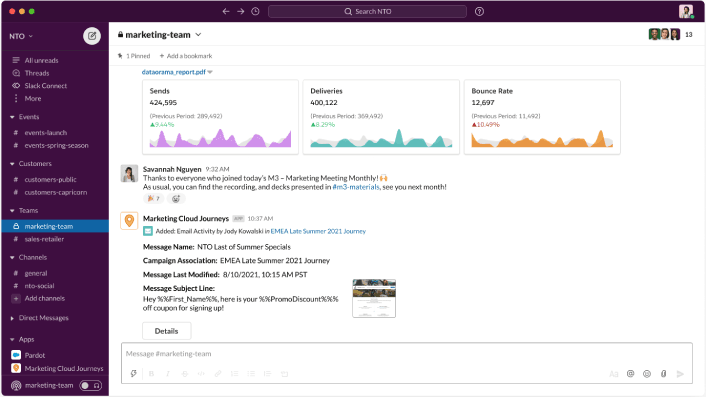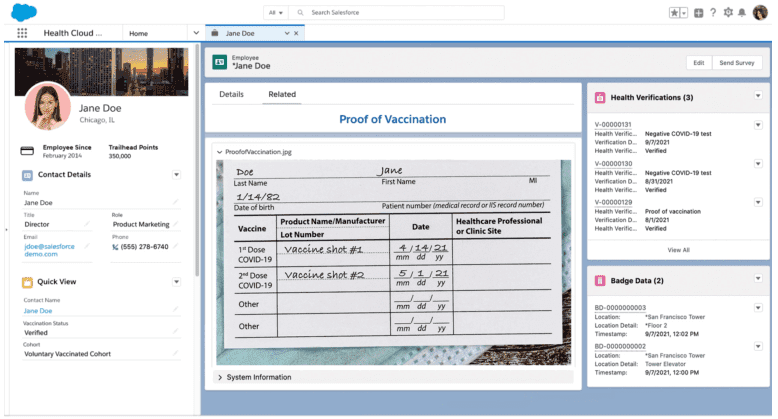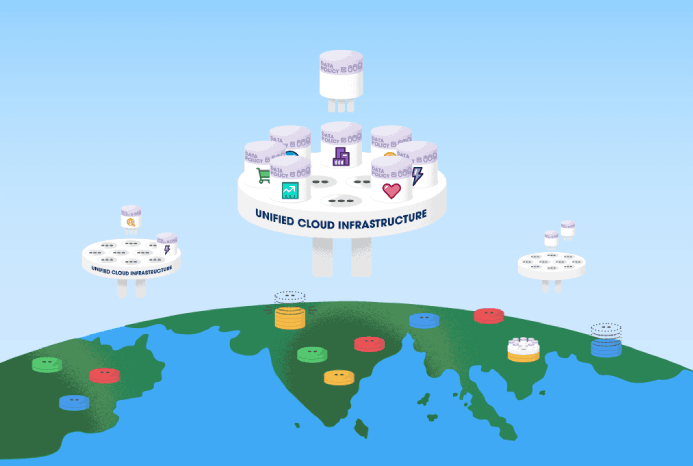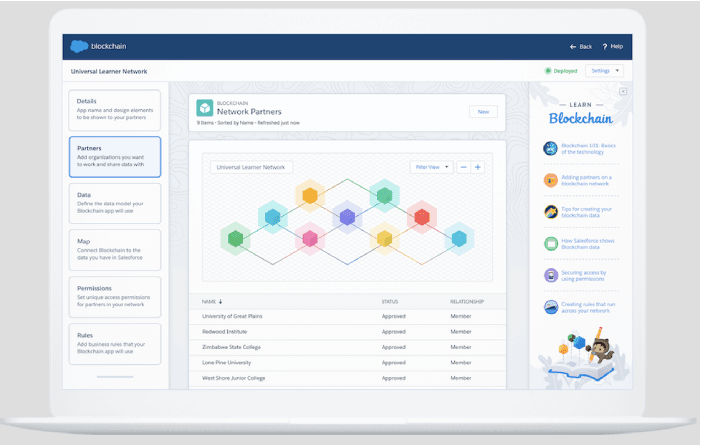Any company willing to automate and manage its business workflow understands the use and importance of Salesforce in the market as it has been helping them in generating customer databases for more than two decades now.
Salesforce’s CRM (Customer Relationship Management) systems are well-recognized for two significant reasons: adaptability and robustness. In addition to this, with the constant updates and the newest Salesforce trends and technology emerging, the platform is becoming a more accessible and requisite tool in the industry today.
2023 is around the corner and like everything else Salesforce consulting partners has also enhanced its way of dealing with a business such as giving customers Salesforce data transfer choices alongside diversifying its reach into various new sectors across the globe.
With that implementation of tools and technology admissible to our industry are important as we envisage 2023. One of the accurate causes of this evolution is COVID-19 which was a turning point for businesses to realize the importance of digital transformation.
Whilst the popularity of Salesforce, many still are unfamiliar with the benefits of integrating Salesforce CRM platform services into their operations. The reason can be due to a lack of knowledge or inability to integrate the new capabilities to the platform that assist users in overcoming operational challenges.
Therefore, to help you get started with Salesforce, here are a few trends to watch out for in 2023 that will help businesses achieve better results while directly increasing the company’s annual revenue. So let’s dive right away!
Top Salesforce Trends to Look Out for in 2023.

Image Source: Salesforce.com
1. SlackFirst Customer 360
The usage of portals increased after the global pandemic, especially among government organizations. Businesses can operate digitally with the help of collaborative platforms without endangering their essential operational procedures. Additionally, they have given experts from all around the world a common platform to communicate and network. Slack was bought by numerous Salesforce solution partners earlier in 2020 in reaction to this trend, pushing it to the top of the platform’s list of priorities. In response to businesses using hybrid workspaces and remote working, Salesforce has chosen to make work easier for businesses all around the world with SlackFirst Customer 360.
With the help of Salesforce and other Slack-compatible products and services, users of SlackFirst Customer 360 may connect, collaborate, and carry out business processes. The platform makes it possible for several departments, especially those involved in sales, marketing, and services, to work together on channels that give a centralized customer experience. Users can automate routine business tasks using the interfaces of Salesforce and Slack, which makes work simpler, more adaptable, and more exact.
2. Salesforce Health Cloud 2.0
Salesforce partner entered the healthcare industry via Health Cloud. The CRM platform was utilized by a range of healthcare professionals and medical institutions to streamline their processes and provide unique patient experiences.

Image Source: Salesforce.com
In response to the evolving needs of healthcare facilities and patients in the wake of the COVID-19 epidemic, Salesforce implemented several enhancements to the Health Cloud, culminating in Salesforce Health Cloud 2.0. With the new CRM systems, users may offer patient care while fighting the worldwide pandemic because they are current with the post-COVID environment. The platform’s features include enhanced vaccine management, contract tracing, and other health assessment capabilities.
By enabling COVID-19 security logs for each guest, Salesforce’s Dreamforce 2021 event utilizes Health Cloud 2.0 and Dreampass to keep everyone secure. The new customer relationship management solution allows users to manage immunization records, test providers, and make targeted contact. SalesforceHealth Cloud 2.0 enables healthcare organizations to provide patients with individualized and hybrid healthcare experiences in addition to value-based treatment from any location.
3. Salesforce Flow Orchestrator
Over time, workflows have gotten more complicated and varied, demanding automation to produce the desired results. As business expansion limits the number of papers, the risk of errors, misplaced revenue, low customer satisfaction, and avoidable delays increases.
To prevent any of these issues, Salesforce developed Flow Orchestrator. Using Salesforce Flow Orchestrator, Salesforce Administrators may configure, install, and automate business processes more quickly. This device enables workflow automation through clicks rather than programming. Salesforce Flow Orchestrator gives users the ability to automate and enhance individual experiences by supplying extra features that boost the influence of business activities.

Image Source: Salesforce.com
Users of Salesforce can give customers enough context by integrating orchestrators into their file pages. Additionally, Salesforce administrators may keep track of and streamline a variety of flows to accomplish corporate objectives.
4. Hyperforce
Businesses from all around the world can access the possibilities of the public cloud thanks to Hyperforce. This cutting-edge next-generation infrastructure design combines public cloud partners, using common tools, software development processes, deployment patterns, and security procedures, to enable businesses to expand quickly and meet local data storage needs.

Image Source: Salesforce.com
To satisfy legal and compliance requirements unique to a company’s or industry’s business or industry, data might be held in a particular region. By enabling better in-country performance and quicker routes between end users and data centers, regional cloud architecture enhances user experience.
Because of the flexibility and effectiveness of the public cloud, Salesforce can expand more quickly, and hyper force significantly reduces deployment times by allowing resources to be easily and quickly deployed on the public cloud. Now, the process that used to take months can be finished in a matter of weeks or even days.
The initial phase of Hyperforce is currently being implemented. While Salesforce CDP is live on Hyperforce in the US and Germany, Salesforce Core Services is presently only available in India and Australia. Expect to learn more about Hyperforce in the upcoming months as Salesforce plans to have it live in 16 nations by the end of 2022.
5. Robotic Processes Driven by AI
Machine learning and AI (Artificial Intelligence) have gained popularity and importance over time. Thanks to these new technologies, digital tools and platforms can now sense and interpret data in the same way as people. As a result of not performing the same tasks repeatedly, people may work more quickly and precisely.
Salesforce has entered the AI and machine learning fields using Einstein. With the use of Salesforce Einstein’s extensive datasets and predictive analytics, it may be possible to predict customer behavior and derive insightful information. Over the upcoming years, Einstein Analytics’ significance will only increase.
Businesses could use business intelligence and analytics leveraging AI and machine learning in conjunction with the CRM platform with the help of Salesforce Tableau connectors.
Additionally, AppExchange partners are urged to provide goods that improve Salesforce Einstein’s capacity for streamlining and optimizing business processes.
6. Blockchain is Trending on Salesforce
Blockchain technology managed to gain a lot of attention in 2022. The blockchain, however, can be utilized for a variety of other purposes outside cryptocurrency. Customers may take full use of technology by disseminating verified data over a secure network of Salesforce customers and other third parties using the low-code platform from Salesforce.

Image Source: Salesforce.com
Salesforce customers may build processes, apps, and blockchain networks thanks to Salesforce blockchain. Making it simpler for a wide range of parties to obtain secure access to and exchange data is the main goal of adopting this technology.
On the other hand, by capturing, conserving, and validating data from several network partners, optimizing blockchain technology would assist businesses in saving money and time.
7. Data and System Integration
Because customers reveal information at various times in their customer relationships, they have learned to expect seamless and connected experiences.
However, just half of the businesses can tailor their interactions based on prior contacts, according to the most recent Salesforce Connected Customer research.
Data is housed in various clouds today, and many businesses use Salesforce to connect to other platforms. The outcome is a scramble among the company’s numerous departments to comprehend and connect with its clients more fully.
Salesforce is always looking for ways to make its customer 360 platforms better so that businesses can offer data-driven, specialized solutions. The platform that connects Commerce Cloud, Salesforce Marketing Cloud, and Salesforce Service Cloud offers an integrated perspective of the customer’s journey.
Additionally, by integrating with MuleSoft Inc.’s web-based integration platform, Customer 360 enables businesses to offer contextualized and personalized experiences as well as smarter decision-making. The most recent updates also make it possible for extensive audience segmentation, data unification and consent management, and many other things.
To remove the barriers of separate data and offer a seamless customer experience across all channels, some time may be needed. However, a salesforce product development strategy that focuses on integration may result in a CRM tool ROI that is higher than expected in the future.
8. Advanced Industry-Specific CRM Solutions
The Salesforce platform is used by businesses in manufacturing, media, retail, and financial institutions. The cloud-based software supplier has made it clear that it plans to give solutions that are more specialized and adapted to customer demands because it has focused on specific business verticals. Salesforce wants to enhance its CRM and Cloud capabilities with industry-specific depth.
Recently, updates to the Salesforce Financial Service Cloud were introduced to increase the company’s influence in specific industries. The CRM solution provider further established its position as a participant in the healthcare sector by announcing the introduction of its Health Cloud at DreamForce 2018.
Through the Salesforce AppExchange, a growing variety of pre-installed apps, solutions, and consultants are available to assist clients in customizing Salesforce for their particular needs sector.
9. Cloud-based Advertising
You can’t market to visitors to your website if you don’t know who they are. Additionally, you should avoid sending them personalized information just because you don’t know what they want.
Salesforce created the Marketing Cloud, as a result, to help you focus on your customers. Among the features offered by this platform are data management, customer journey, pre- and post-insights, customer engagement, and multi-channel project execution.
You may manage mobile, SMS, push alerts, manage email and advertising campaigns, and much more with the help of Salesforce Marketing Cloud. You can provide your customers with a customized experience by using Journey Builder to construct automated multi-channel excursions.
Due to its extensive third-party integration possibilities, you may gather data from numerous sources and acquire deeper insights.
10. Personalization
In the modern world, having a product that is simple to get your hands on is insufficient. Businesses operate under their standards and expectations. They wish to modify the product’s features and layout to suit their requirements. Because of this, Salesforce customization options are lacking.
It’s time for businesses to concentrate on enhancing their CRM platforms. To make sure that everything is in line with your business vision, you will need a skilled Salesforce consulting partner.
Choosing the right consulting partner will help you reach your goals and save you time in the long run.
Over to you
As 2023 approaches, it’s important to keep a watch on these Salesforce developments. Cloud-based systems and automated solutions will eventually be increasingly commonplace in the workplace. It’s ideal to work with a Salesforce solution partner to maximize the use of your CRM, stay on top, and be ready for the newest Salesforce developments in 2023.










Leave a Comment
Your email address will not be published. Required fields are marked *